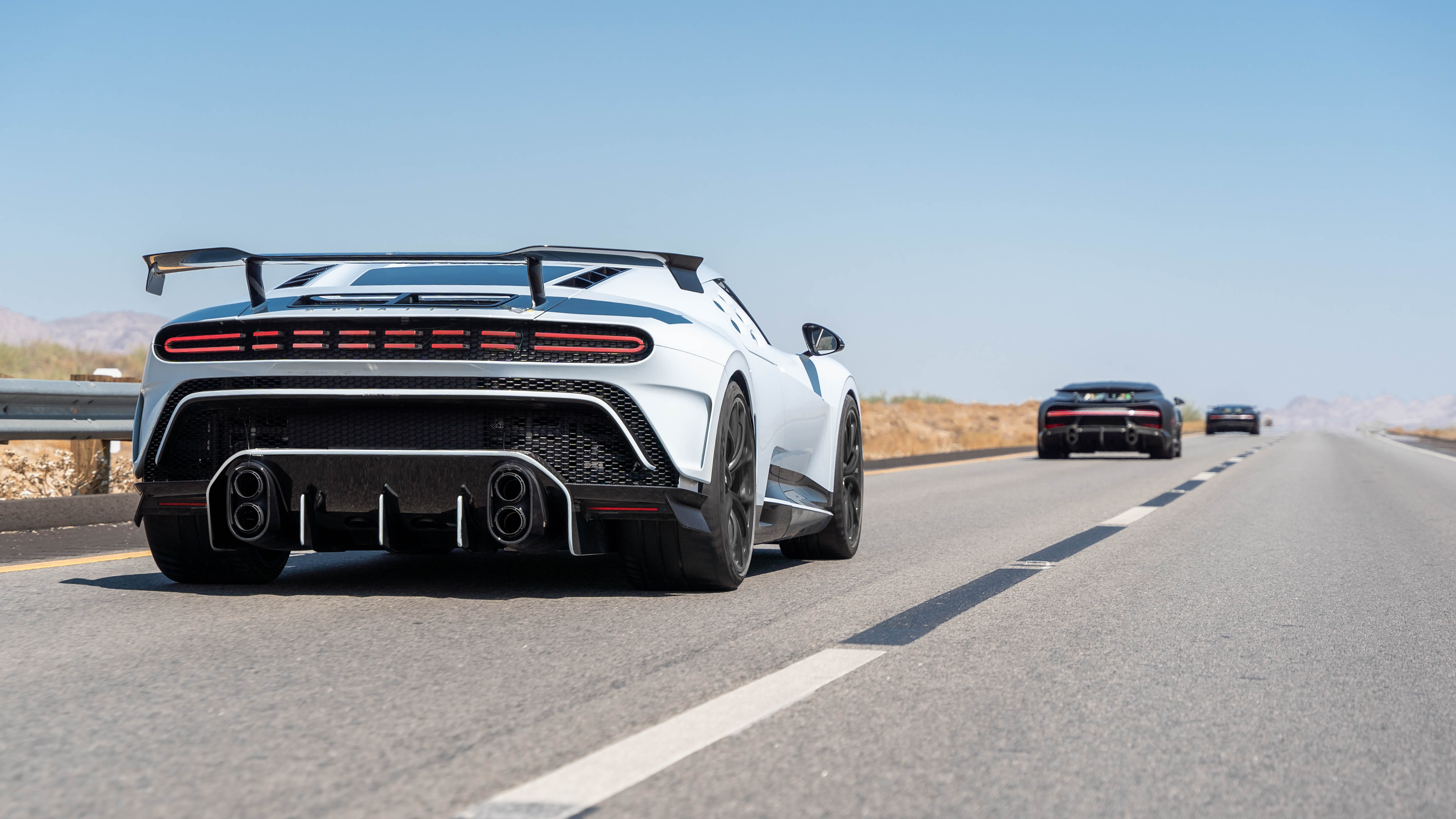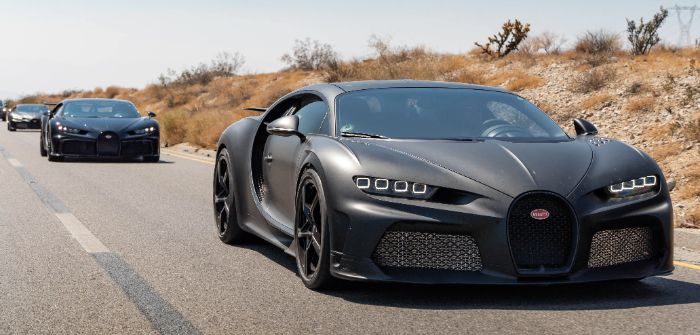Sports car maker Bugatti has released details of its latest testing activities in the USA. A team of 27 engineers from Wolfsburg spent three weeks there evaluating the Centodieci and two other new models, in the hot weather. In total, eight hyper sports cars from Molsheim were analyzed – three Chiron Pur Sports and four Chiron Super Sports, with the Centodieci leading the test drives.
Departing from California, the convoy drove 800km (500 miles) to Arizona, traveling along the Central Pacific Highway by the Pacific Ocean and passing through San Diego. Throughout their journey, the cars were subjected to ambient temperatures typically of 45°C, sometimes exceeding 50°C in the desert areas. Rapid ascents up Mount Lemon to the north of Tucson, Arizona, took the Bugatti fleet to an altitude of almost 2,800m. The cars were pummeled by rough roads, driven in low-speed stop-start traffic, left standing in the blazing sun with the air conditioning on full blast and driven at 320km/h (198mph) on a closed road.
The environment provides a perfect testbed, said Bugatti vehicle development engineer Stefan Schmidt: “Testing in the hot, dry desert is a huge help for us in the development process. All Bugatti models have to function perfectly no matter how high the temperature, including the limited edition Centodieci. Even if we are only creating 10 cars, as with the Centodieci, the testing procedure is just as grueling. Every model has to run flawlessly in all weather and in all traffic conditions.”
At each stage, engineers checked key systems, including the electrics, telemetrics, radio frequencies, air conditioning and fueling processes, again and again. The prototypes were fitted with 200 sensors, which fed data to the development team back at Wolfsburg.
Pierre Rommelfanger, head of vehicle development at Bugatti, commented, “During hot-climate testing, we focus on the chassis, engine, transmission, thermal management, and electrics as well as on the vehicle as a whole. The team check interior components and body parts for thermal expansion, look, and feel, leaving no detail unchecked, no matter how small.
Bugatti’s specialists compared the latest findings with their simulation models and data from previous analyses such as high-speed drives done at Nardó proving ground in Italy.
With its unique attributes, the Centodieci has been subjected to an even higher level of engineering scrutiny than usual, according to the auto maker. Powered by an 8.0-liter W16 engine producing 1,176 kW/1,600ps at 7,000rpm, the Centodieci features an additional air intake near the oil cooler, which regulates the engine temperature.
“The Centodieci’s newly developed bodywork, airflow changes, and its engine bay cover manufactured from glass, mean the temperature behavior is quite different, especially in such extreme, 45°C+ heat,” explained André Kullig, technical project manager for limited-run projects at Bugatti. “This hot weather endurance test is fundamental for us as it is the only way we can ensure that the Centodieci, like every Bugatti model, offers a flawless, reliable and safe drive in extreme heat, too – even though our customers may never subject their cars to such extreme conditions. The new tests prove that our existing setup for the Centodieci works optimally for hours on end even in extreme heat.”
According to Bugatti, the convoy attracted much attention during the test drives – putting a spring in the engineers’ steps. With hot weather analysis completed, the Centodieci will now be taken on its final high-speed evaluation runs and endurance tests, which will involve 30,000km (186,000 miles) of driving in Europe.



